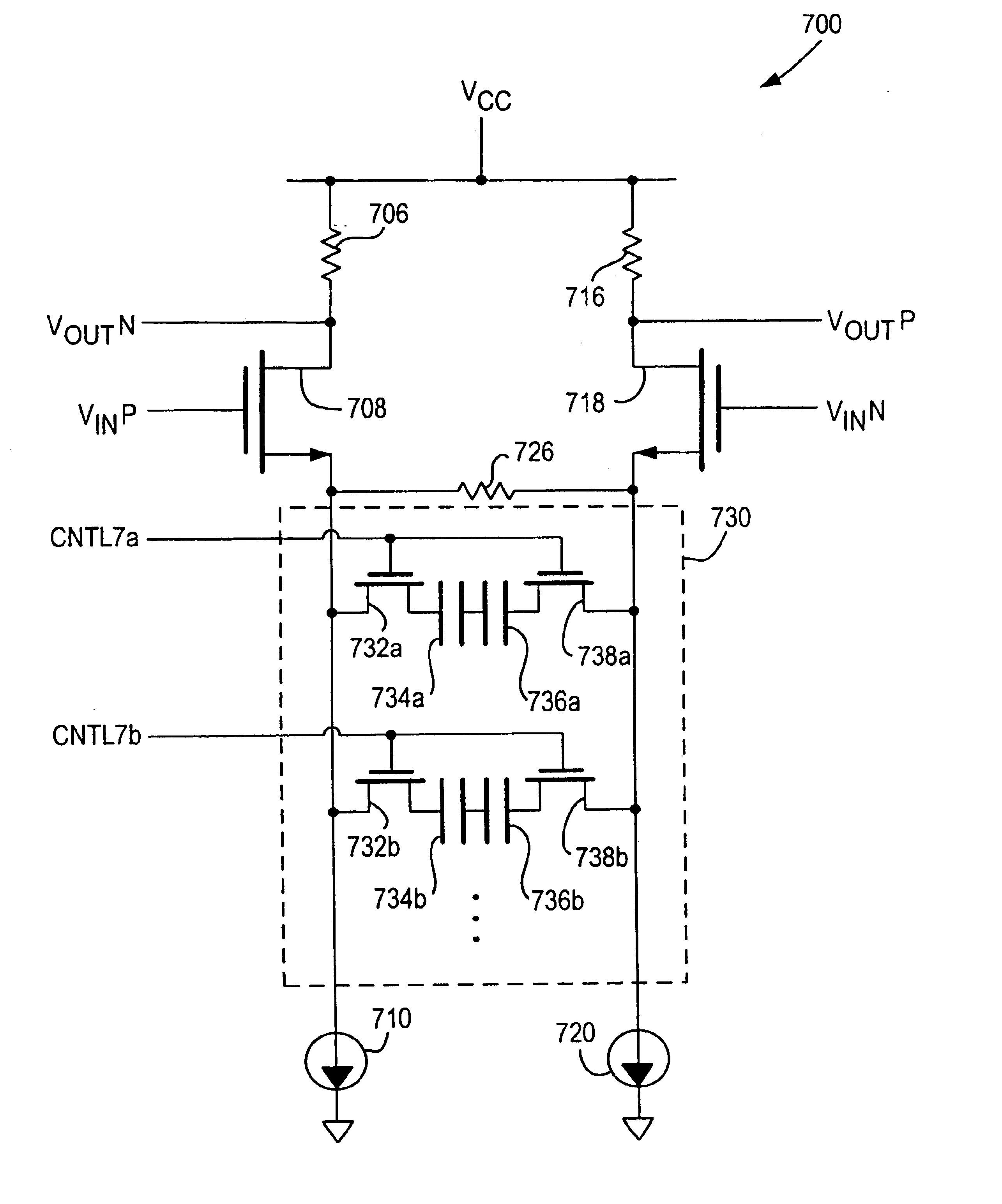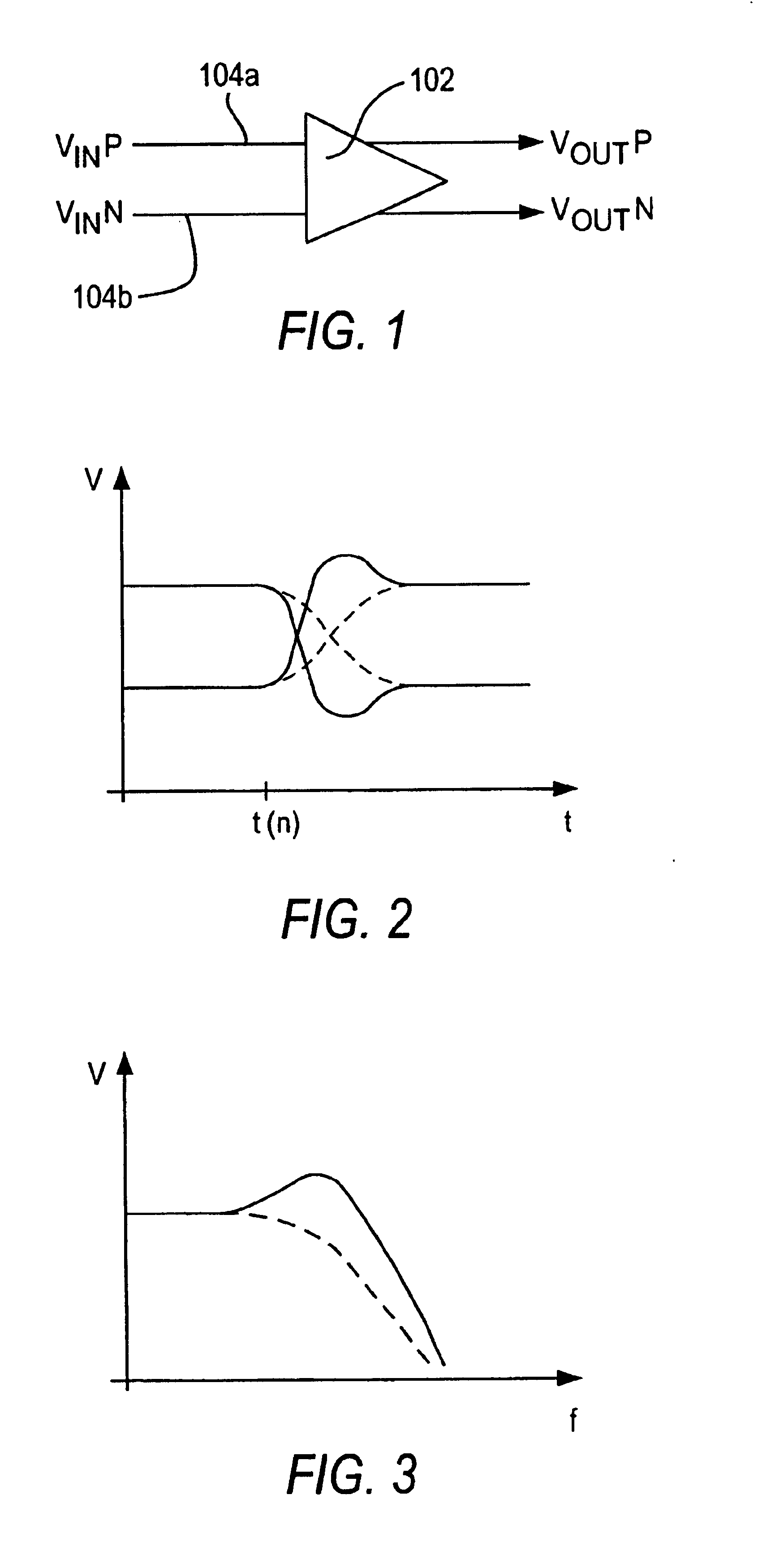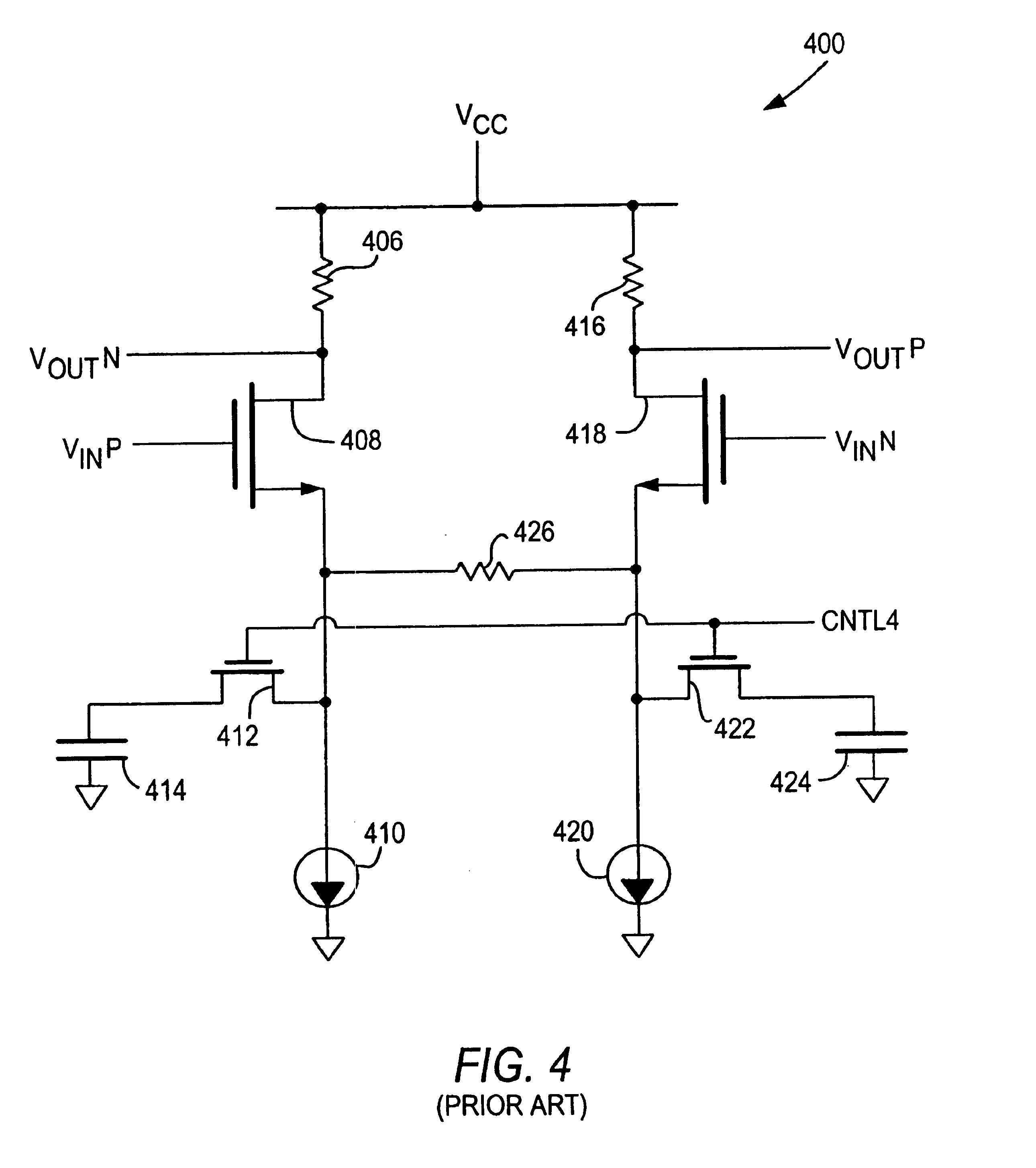Programmable differential capacitors for equalization circuits
a technology of differential capacitors and equalization circuits, applied in the field of equalization circuits, can solve the problems of low cmrr, data errors, poor common mode signal noise rejection, etc., and achieve the effects of improving signal transition speed and strength, optimizing circuit performance, and common mode noise rejection
- Summary
- Abstract
- Description
- Claims
- Application Information
AI Technical Summary
Benefits of technology
Problems solved by technology
Method used
Image
Examples
Embodiment Construction
FIG. 1 shows an input driver or buffer 102 typically found in digital data receiver circuits. Driver 102 receives digital data information via a pair of conductors 104a, b (e.g., signal wires)—using differential signaling. As is well known by those skilled in the art, differential signaling typically means that different digital data values (i.e., logical 0 and logical 1) are signaled via conductors 104a, b in accordance with whether the voltage on conductor 104a is higher than the voltage on conductor 104b or vice versa. For example, a logical 1 value may be indicated by the voltage on conductor 104a being higher than the voltage on conductor 104b. A logical 0 value may be indicated by the voltage on conductor 104b being higher than the voltage on conductor 104a. The signals on the two conductors are thus effectively complements of one another. It is typically desired in differential signaling for the average of the voltages on the two conductors to be substantially constant. This ...
PUM
 Login to View More
Login to View More Abstract
Description
Claims
Application Information
 Login to View More
Login to View More - R&D
- Intellectual Property
- Life Sciences
- Materials
- Tech Scout
- Unparalleled Data Quality
- Higher Quality Content
- 60% Fewer Hallucinations
Browse by: Latest US Patents, China's latest patents, Technical Efficacy Thesaurus, Application Domain, Technology Topic, Popular Technical Reports.
© 2025 PatSnap. All rights reserved.Legal|Privacy policy|Modern Slavery Act Transparency Statement|Sitemap|About US| Contact US: help@patsnap.com



